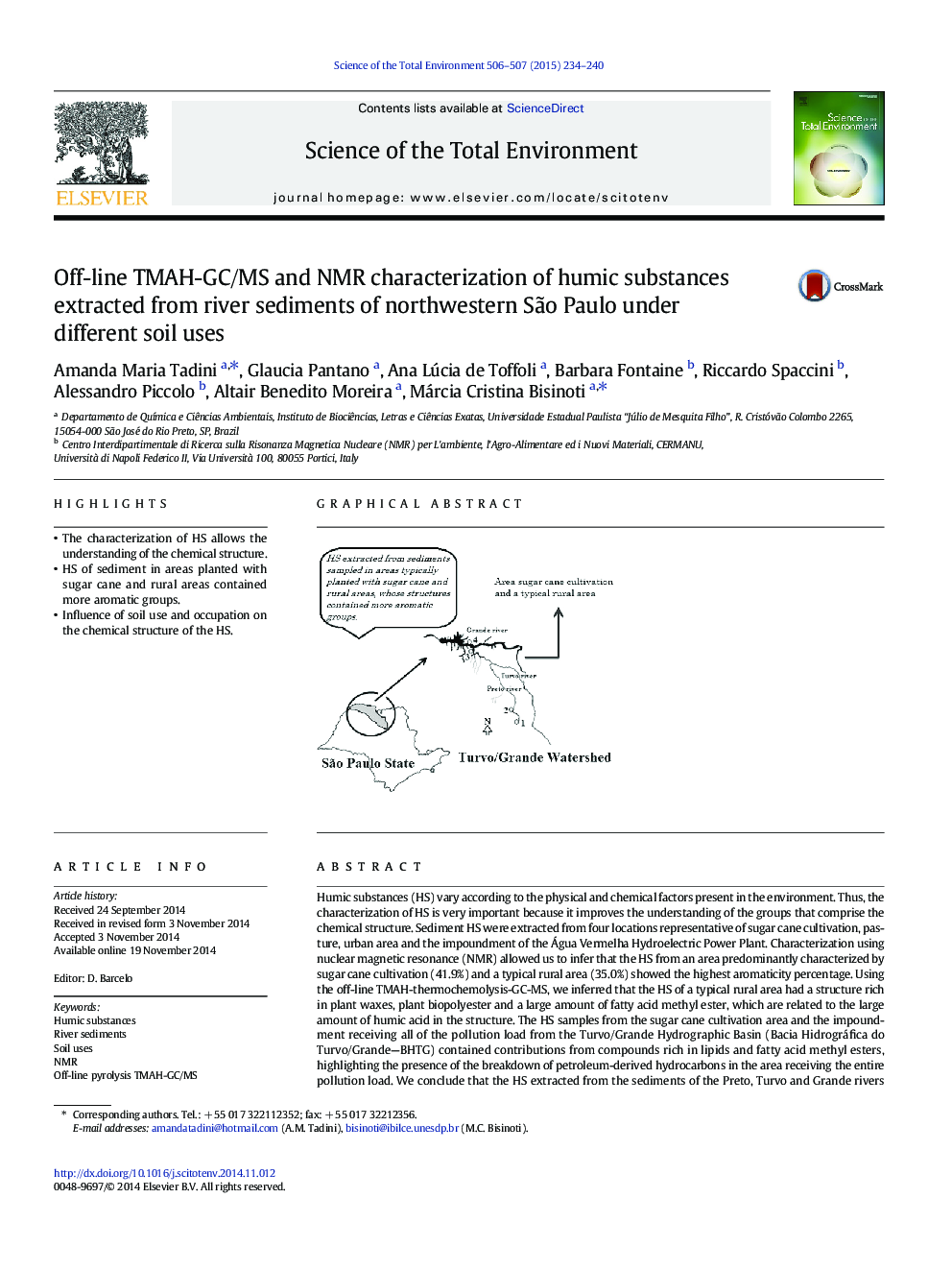| کد مقاله | کد نشریه | سال انتشار | مقاله انگلیسی | نسخه تمام متن |
|---|---|---|---|---|
| 6327689 | 1619769 | 2015 | 7 صفحه PDF | دانلود رایگان |

- The characterization of HS allows the understanding of the chemical structure.
- HS of sediment in areas planted with sugar cane and rural areas contained more aromatic groups.
- Influence of soil use and occupation on the chemical structure of the HS.
Humic substances (HS) vary according to the physical and chemical factors present in the environment. Thus, the characterization of HS is very important because it improves the understanding of the groups that comprise the chemical structure. Sediment HS were extracted from four locations representative of sugar cane cultivation, pasture, urban area and the impoundment of the Água Vermelha Hydroelectric Power Plant. Characterization using nuclear magnetic resonance (NMR) allowed us to infer that the HS from an area predominantly characterized by sugar cane cultivation (41.9%) and a typical rural area (35.0%) showed the highest aromaticity percentage. Using the off-line TMAH-thermochemolysis-GC-MS, we inferred that the HS of a typical rural area had a structure rich in plant waxes, plant biopolyester and a large amount of fatty acid methyl ester, which are related to the large amount of humic acid in the structure. The HS samples from the sugar cane cultivation area and the impoundment receiving all of the pollution load from the Turvo/Grande Hydrographic Basin (Bacia Hidrográfica do Turvo/Grande-BHTG) contained contributions from compounds rich in lipids and fatty acid methyl esters, highlighting the presence of the breakdown of petroleum-derived hydrocarbons in the area receiving the entire pollution load. We conclude that the HS extracted from the sediments of the Preto, Turvo and Grande rivers showed well-defined characteristics that varied depending on soil use and occupation, especially the HS extracted from sediments sampled in areas typically planted with sugar cane and rural areas, whose structures contained more aromatic groups.
70
Journal: Science of The Total Environment - Volumes 506â507, 15 February 2015, Pages 234-240